Biggest farm machinery launches of 2021
Many of the machines launched this year will make their UK show debut at Lamma in January.
Oliver Mark rounds up the 10 headline-grabbing arrivals of 2021.
See also: Tractors: where are they made?
February – JCB TM420S
An “S” derivative of JCB’s TM420 pivot-steer telehandler broke cover in February, bringing with it more power and a new eight-speed gearbox.
The range-topper is an evolution of the standard TM420, launched in 2018, and uses the same 4.8-litre Dieselmax engine as much of the firm’s telehandler range.
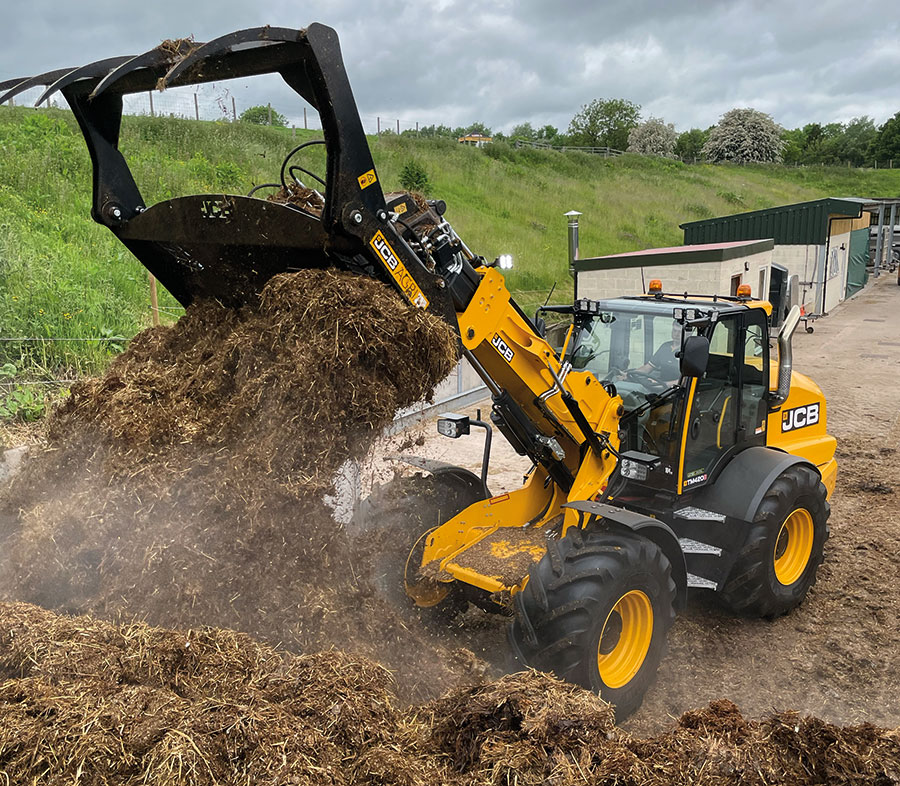
© JCB
However, it pumps out a whopping 173hp and 690Nm of torque, putting it at the apex of the TM line-up.
Other improvements include the new eight-speed powershift transmission that is tuned to deliver a 50kph top speed, and the use of two hydraulic pumps that are able to provide peak flow at lower revs.
Regenerative hydraulics are standard, which help to increase cycle times and allow multiple functions to be operated at once, and it will lift 4.1t and reach 5.45m.
A new one-piece curved windscreen offers better forward views and 52% more overhead glass than the previous cab, and there’s a larger rear three-quarter window, too.
A Pro Edition package for the S-models includes 360deg cab and boom lighting, twin beacons, a chrome exhaust stack, in-cab storage box and a Bluetooth radio.
March – Claas Arion 400
Early March saw Claas add a more powerful model to its now seven-strong Arion 400 range, breaching the 150hp mark.
The launch was timed to coincide with the move to Stage 5 emissions standards for the 4.5-litre, four-cylinder FPT engine.
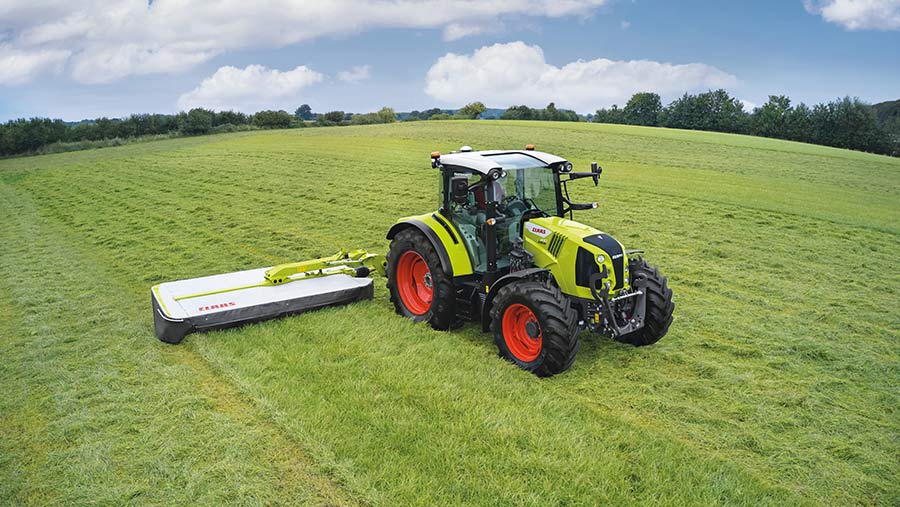
© Claas
It means the new flagship 155hp Arion 470 offers an enviable power-to-weight ratio and, output-wise, is on a par with mid-sized 500-series models.
The bigger fourth-generation models, from the 430 to the 470, are available with the established choice of two Gima-sourced powershift transmissions – the 16-speed Quadrishift and 24-speed Hexashift.
The range remains deprived of a CVT option for now, though the company isn’t ruling it out in the future.
Notable improvements in carrying capacity saw gross vehicle weight increased by 500kg to 9t, allowing for a maximum payload of 3.8t.
Rear lift on the Arion 430 upwards has also risen by the same amount – now 6.25t – and a bigger 150-litre/min hydraulic pump has replaced the old 110-litre/min unit.
This should pay dividends on loader work, says Claas, where operators can expect the lifting cycle to be twice as quick as before.
That’s likely to be a big selling point for the company, considering more than 50% of the previous generation was sold with a factory-fitted loader.
March – John Deere 9-series
More power and an updated cab were the highlights of John Deere’s new 9R, 9RX and 9RT tractors.
For the biggest wheeled 9R and four-track 9RX 640 models, Deere has stuck with the 15-litre Cummins engine that now maxes out at a heady 691hp.
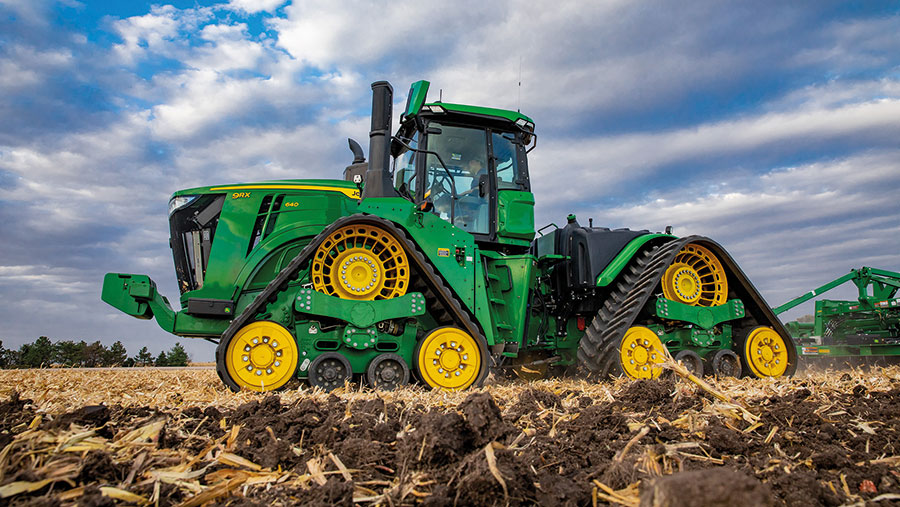
John Deere 9RX © John Deere
The rest of those ranges get the firm’s own six-cylinder, 13.5-litre Powertech block, which was used in roughly half of the outgoing models but now packs an extra 20hp and is apparently 50% quieter.
Reinforcements to the e18 powershift transmission, axles, track drives and chassis should improve reliability, says Deere, and Hydracushion front axle suspension is now available on all 9R machines.
They also get the latest John Deere cab – first launched at Agritechnica 2019 on the 7R and 8R models – that features an integrated guidance receiver, upgraded 6.5in DAB touchscreen radio, and new styling.
A leather Active Seat with heating, cooling and massage functions is also available.
April – Valtra N and T series
The launch of new N- and T-series models all but completed Valtra’s fifth generation of tractors.
With the smaller A (75-135hp) and G (105-135hp) ranges already taken care of, the Finnish firm switched its focus to the cab of the Ns and Ts, where there’s a new post box-shaped A-pillar colour display that replaces the traditional dash-mounted instrument cluster.
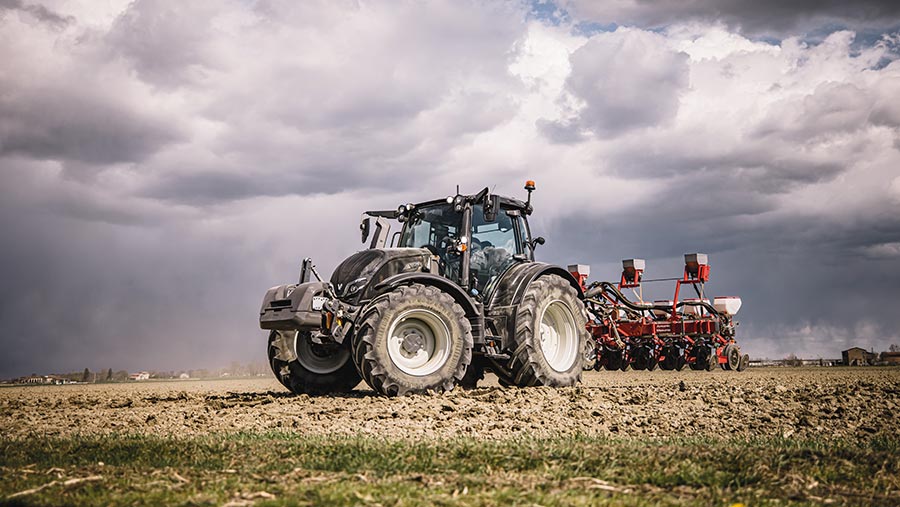
© Valtra
As well as showing the usual driving information, such as engine revs and forward speed, it can be used on simpler Hitech and Active models to make engine, transmission and hydraulic adjustments via a dial on the steering column.
A premium cab package adds chrome detailing, rubber bases inside storage compartments and a darker interior with side panel cladding, plus the ability to control music and phone through the touchscreen.
June – Izona direct drill
The Groundswell event was the launchpad for a new drill from the same engineering stable as the Mzuri Pro-Til.
Branded the Izona iPass, the blue-liveried beast weighs 11t unladen, rides on an 18t lorry-spec axle and needs a tug of at least 300hp.
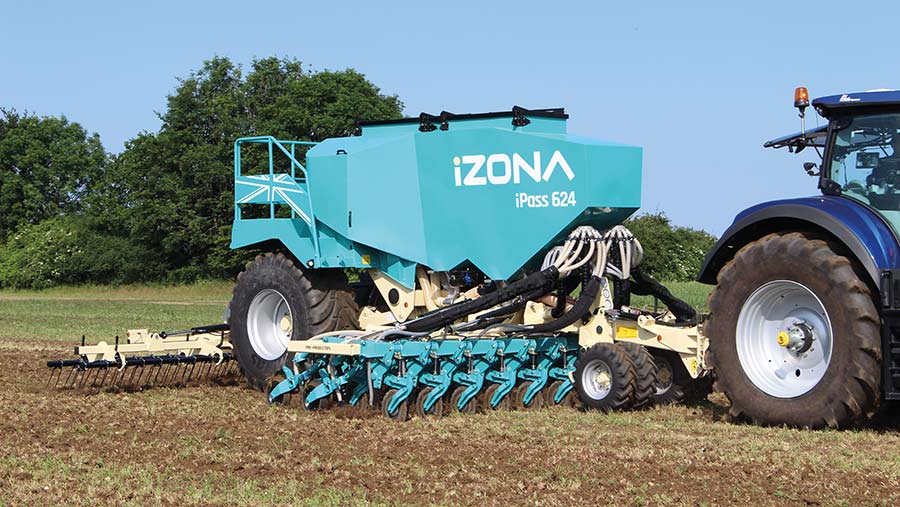
© Edward Mowbray
The semi-mounted drill – which comes with wingspans of either 6m or 8m – is built on a monocoque chassis that carries a pressurised 7,000-litre hopper split 60/40 for seed and fertiliser.
Soil working components include a mix of discs and tines, with a V-shaped press wheel forcing soil back around the seed to keep it weatherproof.
July – New Holland T7 HD and Case IH Optum
New Holland beat Case IH to the launch of an updated trio of 250-300hp tractors – the T7 HDs from the blue side of the CNH divide, and Optums representing the reds.
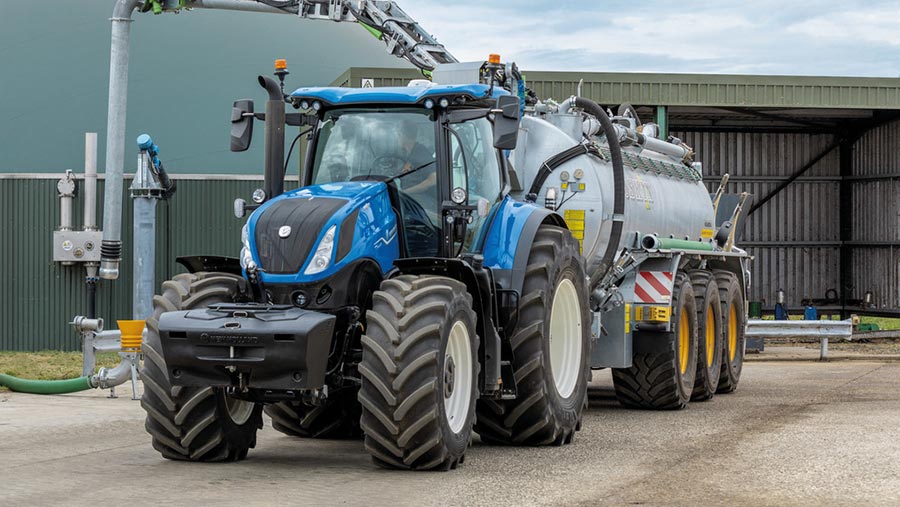
© New Holland
These have a larger, plusher cab, which NH dubs Horizon Ultra, and more sophisticated controls.
Moving the rear cab pillars and dropping the height of the wheel arches has resulted in more internal space, extra storage capacity and better views to the side of the machine.
The engineers have also reduced cab noise and introduced automotive-grade plastics, softer fabrics and concealed trim fixings, and the T7s now have the same control setup as the larger T8s.
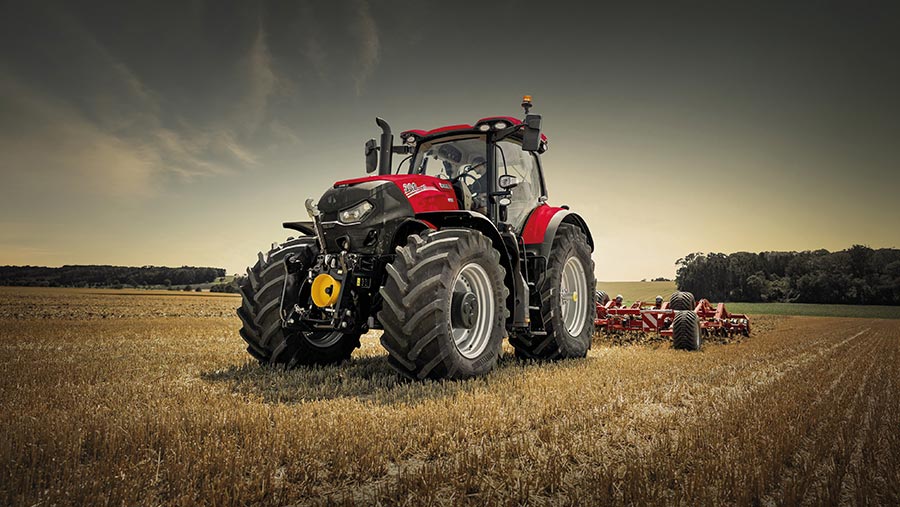
© Case IH
This includes the Sidewinder Ultra armrest and new Intelliview 12 monitor, plus an optional tablet-like screen mounted in the centre of the steering wheel. This replaces the conventional dashboard and displays information such as forward speed, engine revs, gearbox settings and pto rpm.
New Holland’s T7 HD tractors sit at the top of the 14-model T7 range, and are available in three power outputs: 250, 270 and 300hp.
The same changes were also made to Case IH’s Optums, though there are slight differences to the interior, with Case using its new Multicontroller armrest and joystick combination.
July – Deutz-Fahr 7250 TTV
Deutz-Fahr welcomed two 7250 TTVs to its 7-series tractor range, both based heavily on the 280hp 8-series model unveiled last year.
The line-up features a like-for-like replacement for the outgoing version and a heavy-duty variant that is a close match to the 8280 in terms of spec and performance.
The other previous member of the 7-series, the 7230, has been dropped.
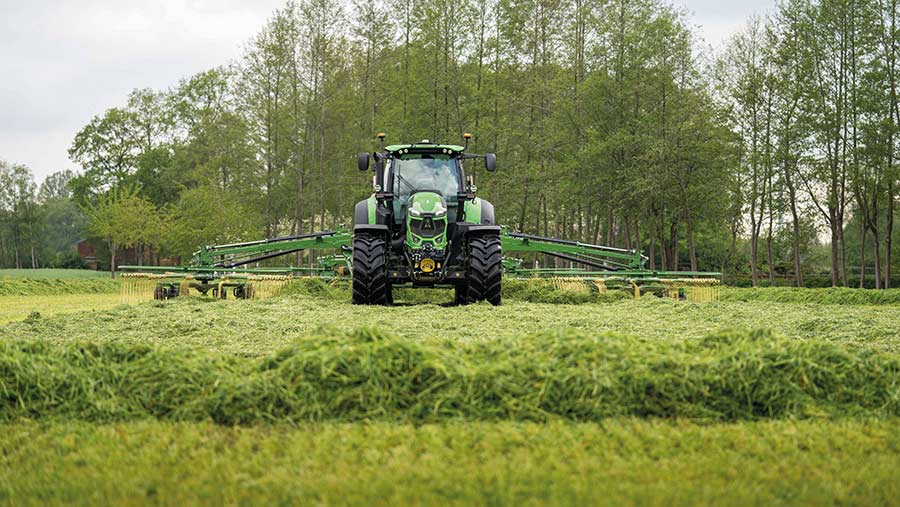
© Deutz Fahr
Most notable among the raft of changes is addition of a “compound” transmission that combines hydrostatic drive for smooth, fast acceleration with mechanical elements that provide greater efficiency for field work at high revs.
The gearbox fitted in the 7250 HD is identical to that of the 8-series, while the standard model carries a lighter-weight design based on the same principle.
As for the powertrain, Deutz has stuck with the 7-series’ 6.1-litre TCD engine, which is tuned to deliver a maximum of 247hp at 1,900rpm. Torque tops out at 1,072Nm – roughly 150Nm below that of the 8280.
August – Claas Trion combines
Claas had a switcheroo on the combine front, with its Tucano and Avero 200-series replaced by a horde of Trion-branded models.
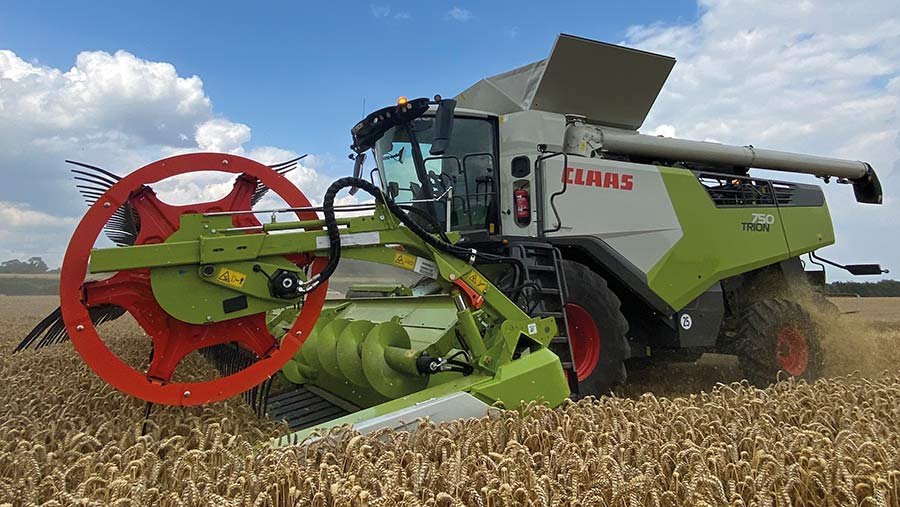
© Claas
This completed a thorough overhaul of the firm’s grain harvesting offering, which started in 2019 when the Lexion 700s were replaced by 7000 and 8000 models, swiftly followed by the high-spec Lexion 5000 and 6000 straw walker machines that superseded the 600-series.
The company offers 20 variations on the Trion theme (taking into account Terratrac and Montana models), starting with two narrow-body, five-walker machines – the 258hp 520 and 306hp 530.
The wide-body 640, 650 and 660 six-walker variants offer another step up in power and output, and at the top are three narrow-bodied hybrid 700s, including the single-rotor 720 and 730 and the twin-rotor, 435hp 750.
All models are now powered by a new British-built six-cylinder 6.7- or 8.9-litre Cummins engine and they carry the company’s APS primary threshing system.
Operator comfort now mirrors much of the Lexion range, with a new cab design offering more head- and legroom for the size of combine, and a larger windscreen and narrower pillars that give decent visibility over the cutterbar.
September – Massey Ferguson 6S and 7S
Massey Ferguson gave its mid-ranking four-cylinder 6700S tractors and the remaining six-pot 7700S models the same striking redesign as that of the 5S and 8S ranges.
This means the new look runs from the 105hp 5S.105 right up to the latest flagship 305hp 8S.305.
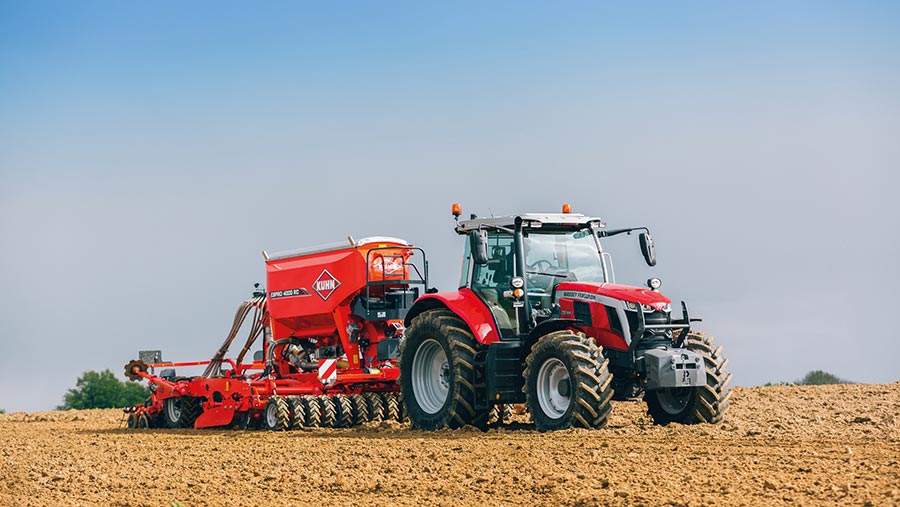
© Massey Ferguson
Propping up the five-model 6S range is the 6S.135 offering 135hp (150hp with EPM) and 648Nm of torque, while the top dog – the 6S.180 – can boost to 200hp and pumps out 800Nm.
The same Agco Power 4.9-litre four-cylinder propels all the models, while transmission options include the ubiquitous Dyna-6 and stepless Dyna-VT.
There are more significant changes in the cab, where the somewhat stale interior has been replaced with a setup that mirrors the big 8S-series.
It features a 9in Datatronic 5 touchscreen that can be used to manage all the tractor functions and set up section and rate control.
There’s also a new E-Loader option for models fitted with a front loader that allows operators to weigh each load and initiate an automatic bucket shake function.
The six-cylinder 7700S models that weren’t included in the 8S range also now have the new cab and exterior styling.
These tractors are pretty similar to the 6S models, but run a bigger 6.6-litre, six-cylinder engine and have a slightly longer 2.88m wheelbase, which results in a 4.93m turning radius.
Power outputs from the five-model line-up start at 155hp for the 7S.155 and rising to 210hp on the biggest 7S.210.
There is a choice of Dyna-6 or Dyna-VT transmissions on the three smaller models; the biggest two only come with stepless drive.
November – John Deere 6R
A revamp for John Deere’s best-selling 6R range saw the introduction of four higher-powered models in its smaller chassis sizes.
These include a four-cylinder tractor that delivers 177hp with boost, and a compact six-cylinder model that tops out at 234hp.
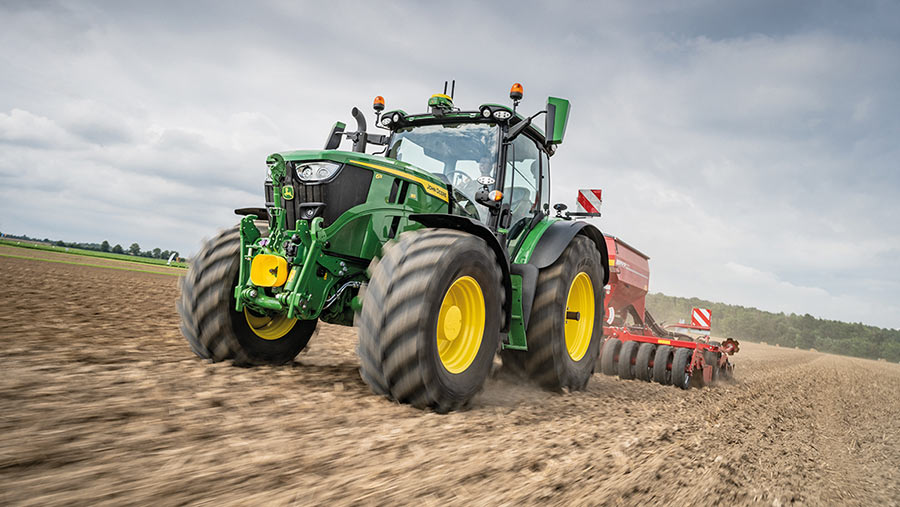
© John Deere
Deere’s previous flagship four-cylinder tractor, the 6135R, delivered a max power of 148hp and 166hp with boost.
However, the new 6R 150 ups these figures to 165hp and 177hp from the same 4.5-litre engine.
This puts it in line with some of the most powerful four-pots on the market, although it can’t match the headline 201hp boost figure that Valtra quotes for its N175.
There are also two new higher-horsepower tractors in the mid-frame six-cylinder range.
The 6R 165 and 6R 185 sit on the same 2,765mm chassis as the old 6155R, but offer considerably more power – 204hp boosting to 234hp in the case of the 6R 185.
This puts it at just 11hp less than the popular large frame 6195R (now 6R 195) and half a tonne lighter.
The other obvious updates are to the styling, which has gradually been filtering down from the firm’s larger models and includes a new bonnet with modified side vents and a more sculpted roof with bug-eye light clusters.
Inside the cab, the conventional dash has been jettisoned in favour of a pillar-mounted digital display, now common fitment from the 6M to 9RX, and there’s a new E-joystick for the loader.

